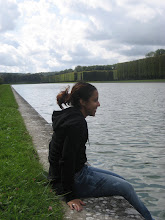March 2008
By ALICIA TEJADA
Four months after one of the most devastating natural disasters struck the southern edges of Bangladesh, the country is still under reconstruction. And preparation for the next one is crucial.
Cyclone Sidr, the furious storm that swept through the Bay of Bengal packing winds of over 100 miles an hour, affected more than 8.7 million people, destroyed some 564,000 homes, and exterminated over 2.2 million acres of crops according to a report by the United Nations Office for the Coordination of Humanitarian Affairs (OCHA).
Emergency relief in food, shelter, water, sanitation, and agriculture was immediately expedited. With the World Food Programme (WFP) working with the Bangladesh Air Force and facilitating helicopter airdrops of food, Direct Relief International (DRI) providing $1.2 million worth of medical supplies, and the U.N. Central Emergency Response Fund (CERF) $14.7 million, life-saving relief assistance was readily available.
“In addition to assistance from NGOs and other agencies, Bangladesh has received $100 million in bi-lateral donations for Cyclone Sidr,” said Stephanie Bunker of the U.N. Office for the Coordination of Humanitarian Affairs.
But aside from rapid relief efforts, prevention and preparedness must be a topic at the top of any agenda, especially with extreme weather anticipated as a result of human-induced climate changes. According to the latest human development report by the U.N. Development Programme, sea level rises of only 40 cm in the Bay of Bengal can increase the frequency of cyclones, in turn, breaking down agricultural systems and triggering a mass displacement of some10 million, already poverty stricken people. And until the political and financial state reaches a certain level of stability, preparation systems will remain inadequate.
“When there is a disaster all NGOs are essential at the moment but we have to do better than that, we have to work in prevention methods so when there is a disaster the impact is less,” said Brigitte Leoni, Media Relations Officer of the U.N. International Strategy for Disaster Reduction in Geneva. Leoni went on to explain that those living below poverty lines – which counts for more than 50 percent of the Bangladeshi population – encounter grueling experiences in maintaining their livelihood after a natural disaster. “Villagers have suffered because of loss of employment and the demise in crops.”
Humanitarian agencies have always assisted in immediate relief, helping with vaccinations, food, shelter, but in the case of Bangladesh, what needs to be done is integration of risk reduction methods. Leoni proposes that homes be built in higher grounds, making villages more resilient. “Even the poor are able to put up shelters and take measurements like building homes higher; if they know there is going to be a flood, they also have the option of going to warehouse type shelters where they can take crops and animals, this way if disaster occurs they can salvage some means to re-develop their livelihood,” said Leoni.
But along with the political situation in the Bangladesh, the economy remains unstable and the government sometimes fails to issue instructions on distribution of funds and supplies. Such developments as the one Leoni referred to can be costly and agencies are unable to provide all resources to construct sufficient locations.
“Government officials are still working for recovery. There are still some 500 people displaced from their homes; the government is trying their best to help the affected people but they do not have enough money to do so perfectly,” said Lovlu Ansar, Executive Editor of Thikana.
Government officials have made an effort towards the reduction of vulnerability. According to the Comprehensive Disaster Management Programme in Bangladesh, officials have attended post graduate disaster management training courses offered and funded by the Australian Agency for International Development in Melbourne, Australia since 2006. Remote communities in the south-western coast must now be exposed to this education.
The everlasting gender inequality in the villages, however, can pose a problem. Women are mostly affected by disasters because they do not participate in disaster discussions and decision making. Leoni said that swimming lessons for instance, are a good start at opening doors for women in villages to engage in disaster education. “The main issue is awareness,” said Leoni.
She added that government officials should work towards providing means and knowledge for villagers to make homes safer by rebuilding away from flood planes, saving crops, and for agencies to create a well-done draining system so that water flows rather than flood occurring. “If you can prevent, then you reduce vulnerability; this is what needs to be done in Bangladesh right now.”
Subscribe to:
Post Comments (Atom)

No comments:
Post a Comment